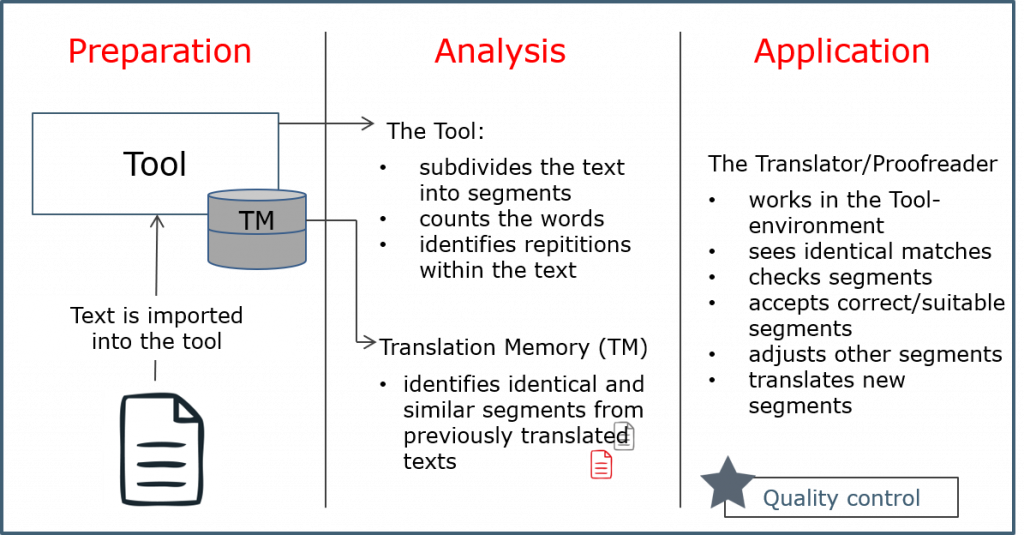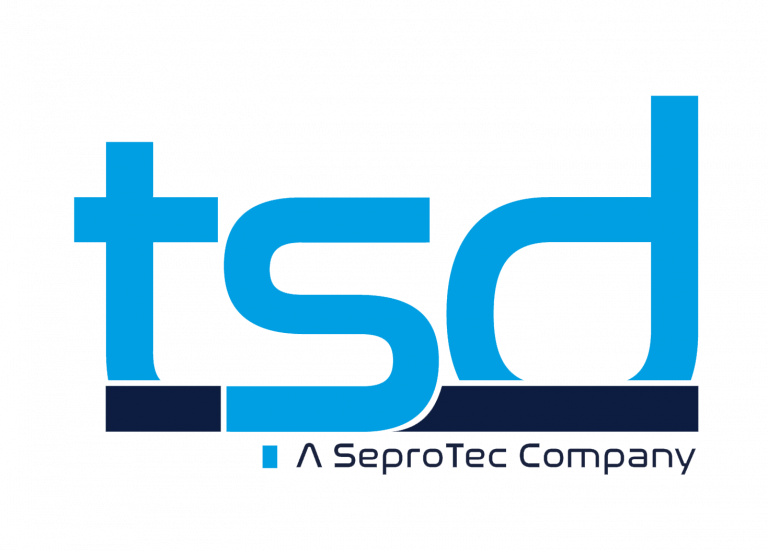Translation with translation management systems
Application and process
Translation management systems (abbreviated to TMS) have been a core component of our translation processes since the 1990s. They support our translators, proofreaders and project managers in meeting essential quality criteria, such as consistency, completeness and correct use of terminology. They facilitate efficient, sustainable and seamless processing of multilingual projects from their initial creation right through to final delivery or publication. These modern software tools therefore play an important role in our processes and our quality management system.

Results of analyses performed by these tools usually form the basis for the calculation of project costs and therefore for the preparation of offers. The key data they provide (total word count, rate of repetitions etc.) are also relevant for process scheduling.
At tsd, we keep a separate translation store, also known as a translation memory or TM, for each individual customer. When translated, each segment is saved in the bilingual database created by the tool.
Using the software, we can then determine whether subsequent projects contain segments repeated from previous translations.
If a translator comes across a repeated segment during their work, the tool suggests the translation from an earlier project. They can then review the translation and accept it or adapt it accordingly. When the proofreader has finished reading a text, the software can also be used to perform an automatic quality check. For example, the tool detects whether there is a corresponding segment in the target text for every source text segment and also checks content that remains the same in translation such as numbers.
The project manager can check the translated content out of the tool and send it back to the customer in the same format as the source text. Other file transfer options are also possible, for example in automated processes.
Objectives and types of TMS
The following presents a brief overview of the objectives of using translation management systems:




As every project is different and because we offer customers different workflows according to their requirements, we use a broad range of translation management systems:




All of the software solutions can process a range of file formats. We decide on an individual basis which tool we use for each customer. The workflow is defined according to specific customer and project requirements.
As translation management systems are part of our everyday work at tsd, we also place great emphasis on selecting employees who are experienced and confident users of these programmes. We also hold regular training seminars for our employees as part of our quality management system.
Through constant contact with our partners and by monitoring new market developments alongside regular evaluation of various approaches, we are always up-to-date and able to adapt to specific working processes as well as react to new requirements.
